Traveling on Keto: Master Low-Carb Adventures Everywhere
This post may contain affiliate links. If you purchase through these links, I may earn a small commission at no extra cost to you. LEARN MORE.
Traveling can make sticking to a keto diet challenging, but with some preparation, it’s entirely possible to enjoy your journey without compromising your eating habits.
For keto travelers, packing low-carb, high-fat snacks and planning meals in advance can be key strategies to avoid unexpected carb overloads.
Exploring local grocery stores and checking restaurant menus before dining out can help you stay on track with your low-carb lifestyle.
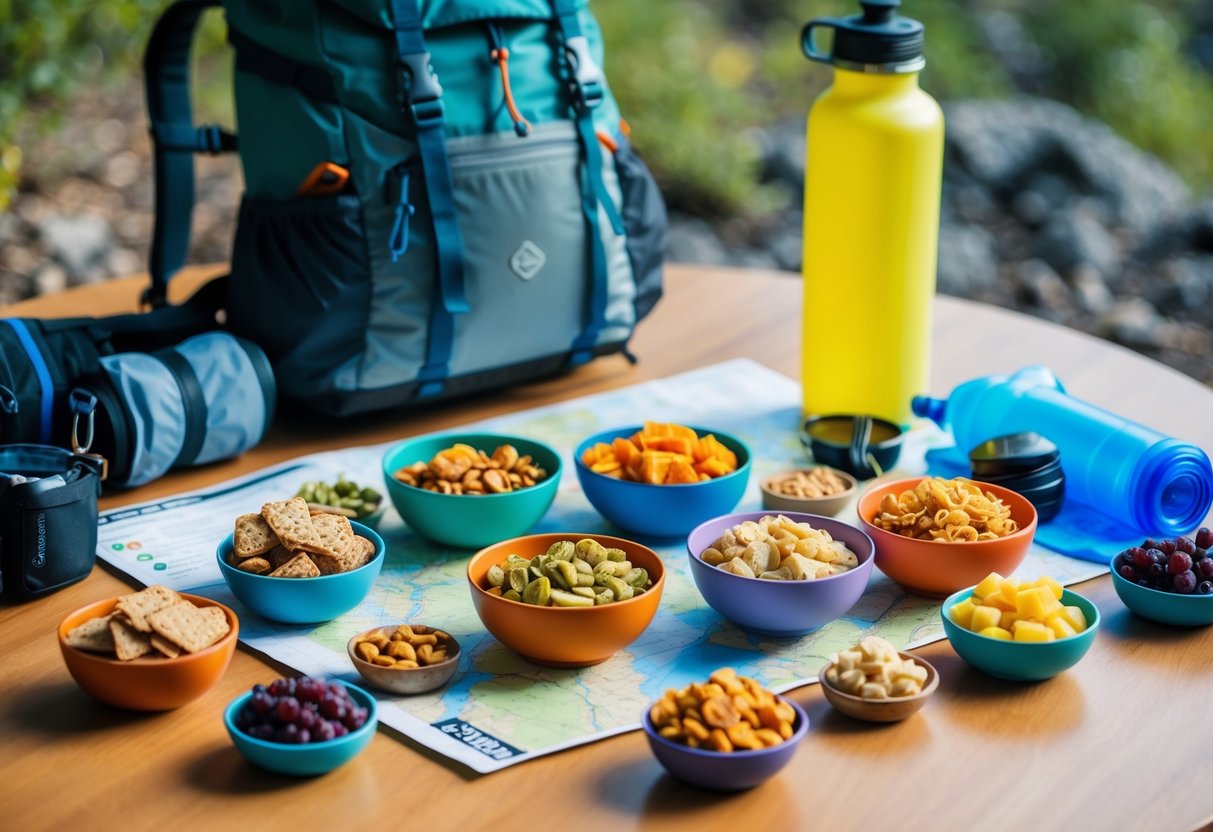
Finding keto-friendly options while on the road doesn’t have to be a daunting task.
Search for restaurants that offer protein and vegetable-based meals, allowing you to maintain your diet even in unfamiliar places.
Incorporating intermittent fasting can also be helpful—plus, it offers the flexibility of not worrying about multiple meals in a day.
Expect a few bumps along the way, but stay focused on your commitment.
Making thoughtful choices about your food can make your travel experience both enjoyable and keto-friendly.
New to keto? Start with our Custom Keto Diet Explained for Beginners to build a strong foundation.
Ready for a personalized keto plan? Check out our Custom Keto Diet program for tailored guidance on the go!
Key Takeaways
- Pack keto snacks and plan meals to avoid carb overloads.
- Choose restaurants with protein and vegetable-based meals.
- Expect challenges but focus on staying committed.
Prepare Your Traveling on Keto Journey
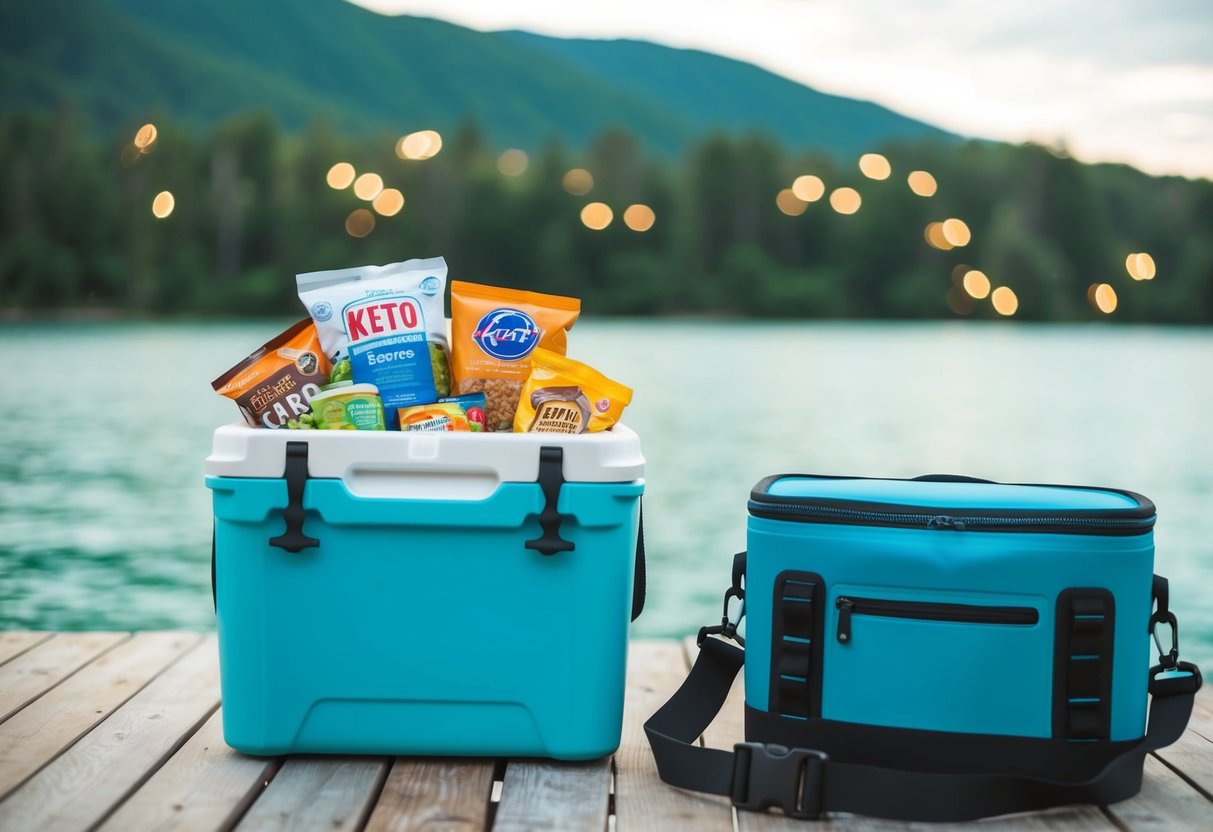
Proper preparation ensures a successful keto journey while traveling. It involves planning meals and snacks that meet dietary requirements and making thoughtful choices on the road to maintain a steady nutrient intake.
Crafting Your Meal Plan for Traveling on Keto
Creating a low-carb meal plan is crucial for staying on track.
Begin by reviewing the travel itinerary and identifying potential meal stops.
Booking accommodations with kitchen facilities can help plan keto meals using fresh ingredients.
Pack keto-friendly snacks like nuts, cheese sticks, and jerky to handle hunger between meals.
Keeping a list of keto-friendly restaurants along the route saves time and avoids guesswork.
Consulting a dietitian can also help tailor meal plans to personal needs, ensuring optimal nutrient intake during the trip.
They can suggest options for meals that adhere to the keto diet, supporting health while traveling.
Planning ahead not only keeps one in ketosis but also reduces the stress of finding suitable options on the go.
Plan your meals using our 7-Day Custom Keto Diet Plan for Beginners for daily inspiration.
Keto-Friendly Foods to Pack
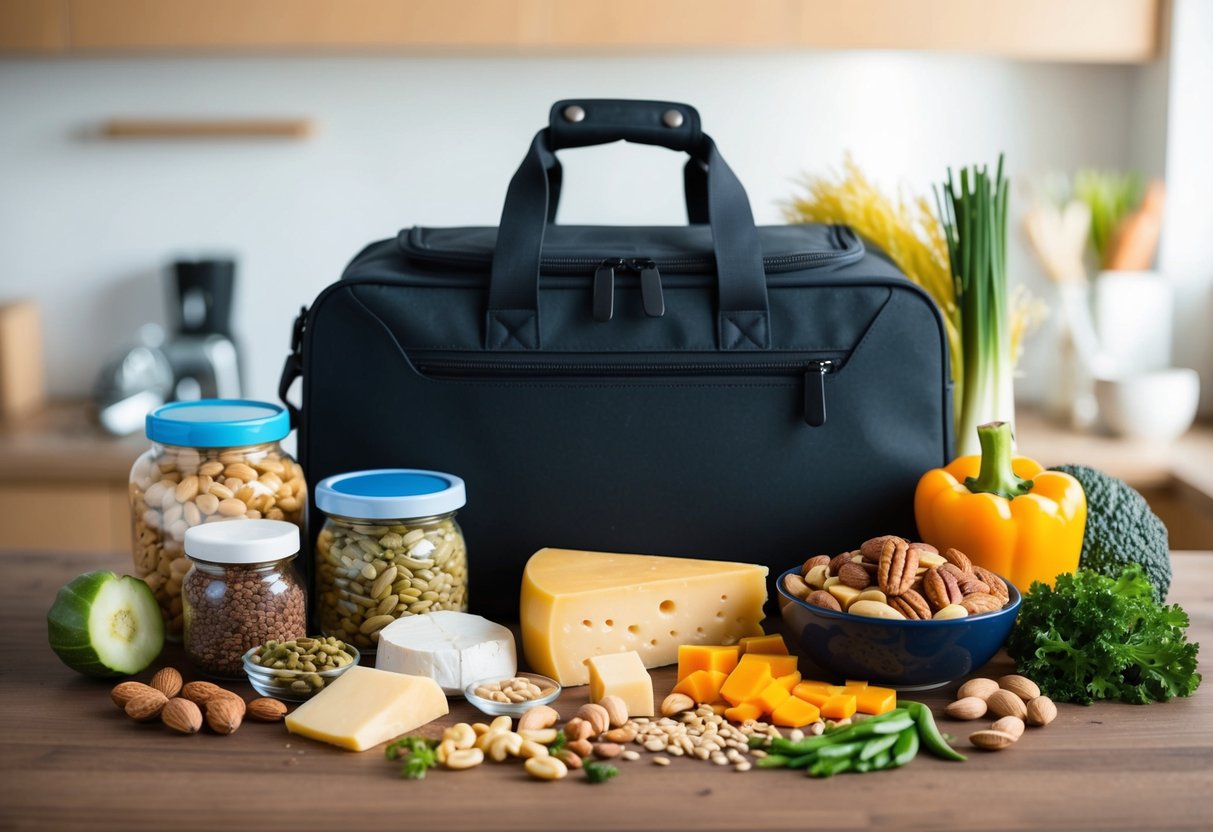
Traveling while maintaining a keto diet can be easy with the right foods.
Choose snacks that are high in protein and healthy fats to keep you satisfied on the go. Proper hydration is also essential, especially when traveling.
Portable Low-Carb Snacks
Packing the right snacks ensures you stay on track with your keto diet while traveling.
Nuts and seeds, such as almonds, macadamia nuts, and sunflower seeds, are excellent choices; they are high in healthy fats and low in carbs.
Pork rinds are another great option. These crispy snacks deliver crunch without the carbs.
Cheese sticks and boiled eggs offer protein and are easy to carry.
Meat sticks or jerky can be convenient, too. Make sure to check for hidden sugars in flavored varieties.
A small container of olives adds variety and healthy fats.
Being prepared with these snacks can help avoid the temptation of high-carb foods.
Discover more quick snack ideas in our 10 Quick and Easy Keto Snacks to Keep You Energized All Day article.
Hydration and Electrolytes
Staying hydrated is important, especially on a keto diet. This involves more than just drinking water.
When traveling, consider carrying electrolyte supplements. They help replenish sodium, potassium, and magnesium levels, which can be lower on a keto diet.
Drinking plain water is essential, but adding a pinch of salt or an electrolyte tablet can ensure optimal hydration.
Coconut water or electrolyte beverages without added sugars can also be good choices.
By staying hydrated and managing electrolytes, travelers can avoid fatigue and maintain energy throughout their journey.Learn how hydration supports ketosis in our Keto & Gut Health: Unlock Microbiome Secrets post.
Explore electrolyte powders and travel bottles on Amazon.
Navigating Dining Out and Social Eating

When following a ketogenic diet, dining out or attending social events can be challenging. Making informed decisions and keeping carbohydrate intake in check is key.
Choosing the Right Restaurants
Finding a suitable restaurant begins with research.
Opt for places that offer a variety of protein-rich dishes like grilled meats or seafood, as these tend to be low in carbs.
Checking menus online before visiting can help in identifying keto-friendly options.
Most restaurants are accommodating when it comes to dietary needs.
Seeking establishments known for customization allows adjustments, such as swapping sides for low-carb vegetables or salads.
Avoid places that heavily focus on breaded or fried items to minimize hidden carbs.
Buffets with meat and vegetable options can be a good choice since they provide flexibility in selecting appropriate foods.
For more dining tips, read our Dirty Keto Diet Plan: Simplifying High-Fat Low-Carb Meals guide.
Communicating Your Dietary Needs
Effective communication with the restaurant staff is crucial to maintaining a low-carb diet.
Speaking directly to the server about specific needs ensures the meal is prepared accordingly.
If uncertain about specific dishes, asking about ingredients like sauces that might contain sugars or flours helps in making better choices.
Being explicit by using terms like “no bread” or “swap the fries for a salad” helps emphasize the request.
Another approach is to ask for grilled items and dressings on the side, making it easier to control net carbs.
With clear instructions, dining out becomes less of a challenge while maintaining the ketogenic lifestyle.
Need personalized advice? Our Custom Keto Diet plan offers tailored support for traveling keto dieters.
Staying in Ketosis While Traveling
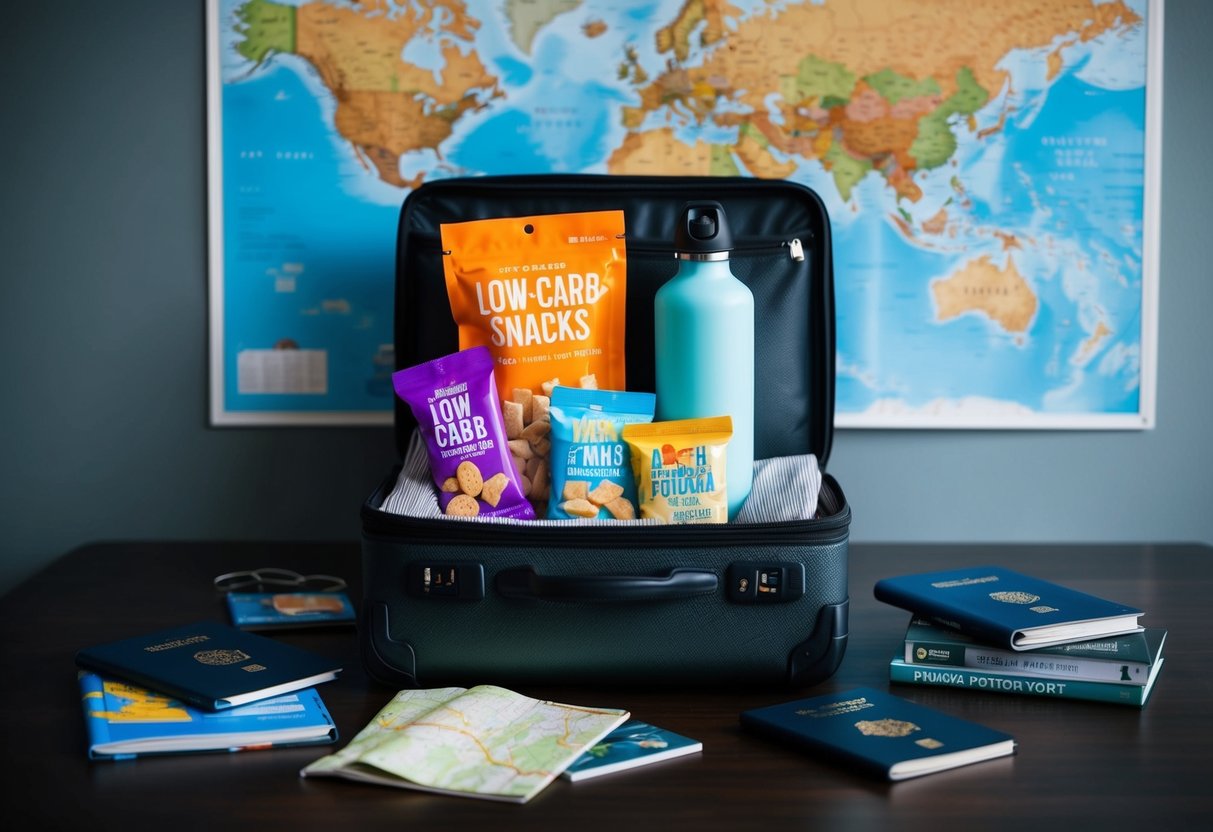
Maintaining ketosis while on the road can be manageable by planning ahead, choosing the right foods, and monitoring your progress. Understanding how to track ketone levels and manage dietary needs is key.
Monitoring Your Ketone Levels on the Go
Tracking ketone levels helps ensure that the body remains in ketosis.
Portable ketone meters are useful for this when traveling. These devices test blood or breath to give quick results on ketone levels.
Exercise can influence energy levels and ketone production.
Regular cardio or light stretching may help the body adjust and maintain energy.
Travelers might incorporate short workouts to sustain ketosis.
Incorporating intermittent fasting is another method to stay in ketosis.
It reduces reliance on frequent meals and can control cravings for carbs.
Planning meal times can align with sightseeing schedules, making travel more enjoyable while maintaining dietary goals.
By focusing on macronutrients like fats and proteins, individuals can maintain their diet even in unfamiliar settings.
Packing snacks like nuts or jerky can provide quick, keto-friendly options.
Staying hydrated is essential, especially when combining fasting with physical activity.
Adjusting meal plans based on available foods at destinations allows flexibility while keeping the low-carb goal.
For detailed tracking tips, check out How to Calculate Macros for Keto: Step-by-Step.
To keep tracking ketone level, try these tools from Amazon o help your traveling on keto.
Managing Expectations and Challenges
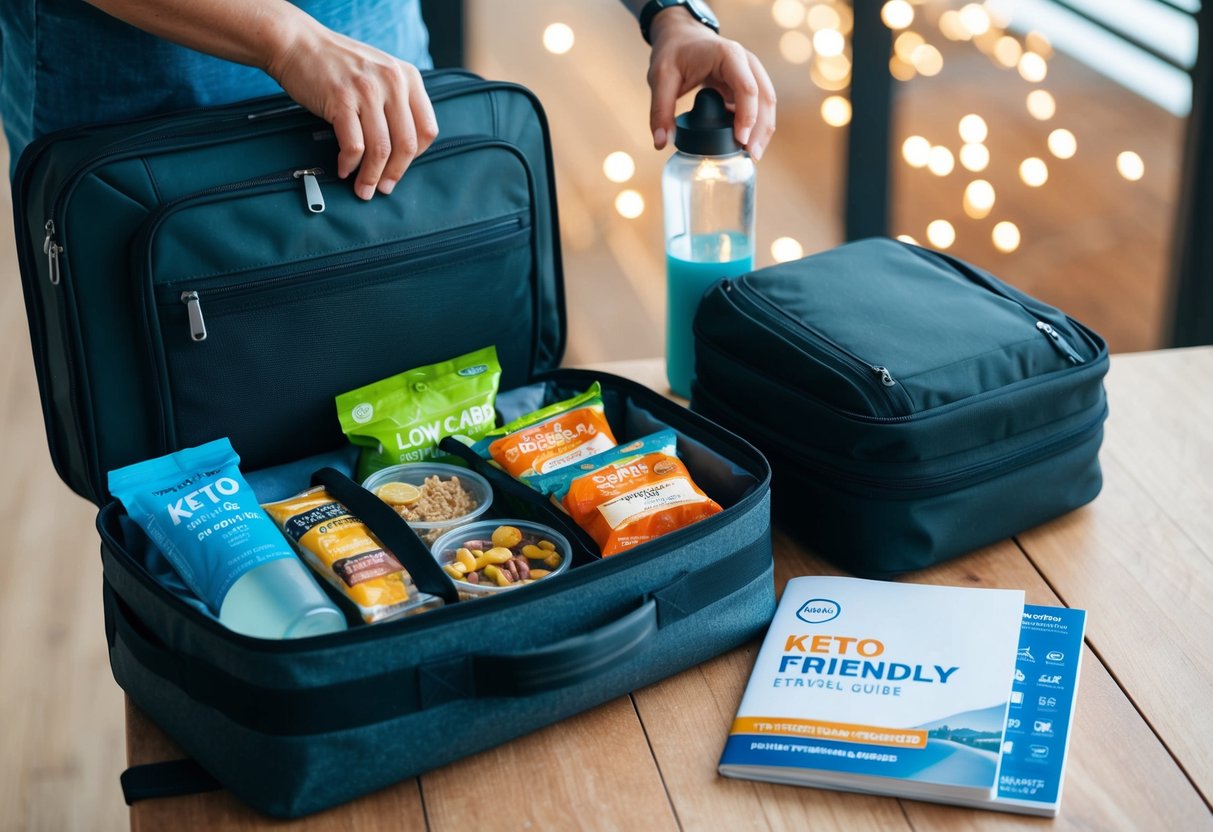
Traveling on a keto diet may bring unique challenges, such as resisting tempting carb-rich foods and dealing with occasional setbacks. Planning ahead and understanding how to manage these situations can lead to a more successful journey.
Dealing with Temptations and Setbacks
Staying on track can be difficult when traveling.
To avoid indulging in carb-heavy foods, packing keto-friendly snacks like nuts, cheese, or beef jerky can help.
Choosing low-carb options at restaurants, such as grilled meats and salads, is key.
Setbacks may occur, like unexpected carb consumption, which can impact weight loss or metabolic goals.
It helps to resume normal keto eating habits promptly.
Incorporating apple cider vinegar might aid digestion and reduce inflammation, supporting health even after mishaps.
Maintaining a positive mindset encourages progress despite occasional challenges.
Learn more about overcoming keto challenges in our Why Am I Not Losing Weight on Keto? Tips to Overcome Common Mistakes article.
Frequently Asked Questions
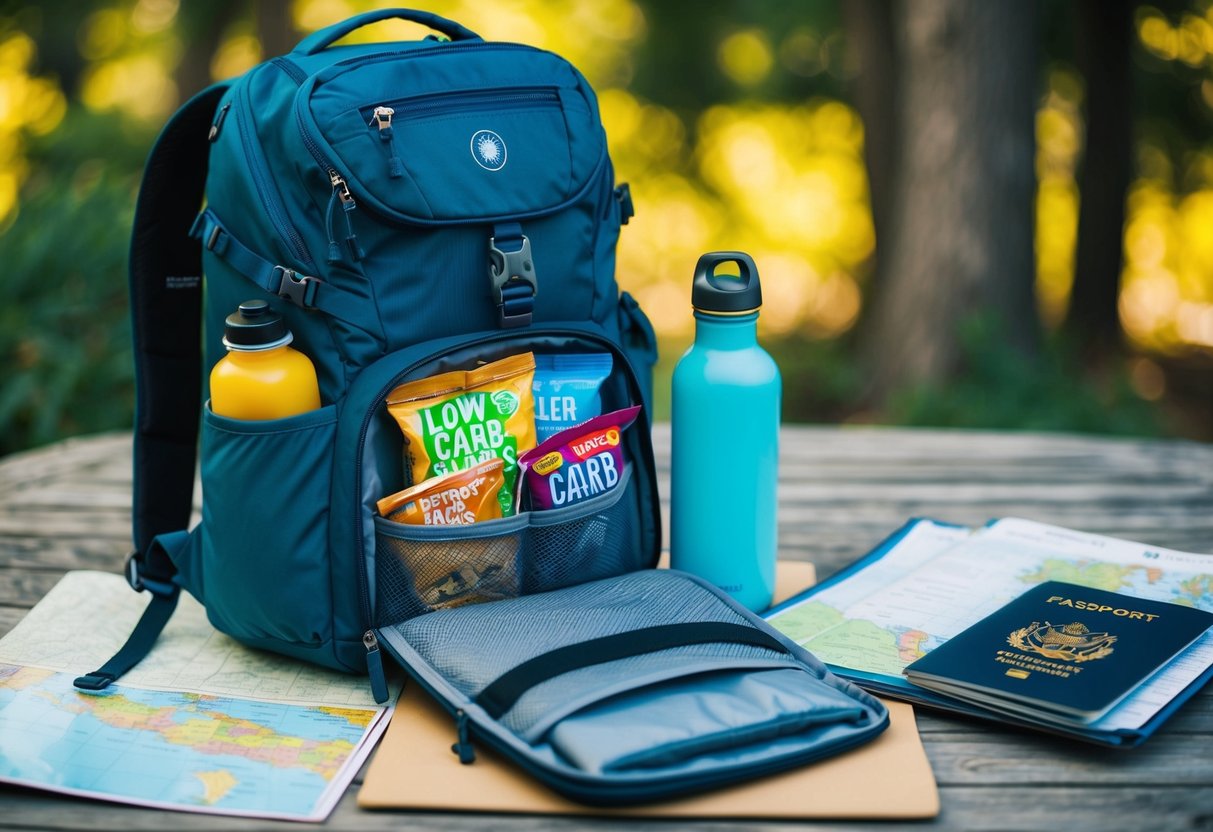
When traveling on a keto diet, it’s important to be prepared with snacks and meal options. Different travel scenarios call for different strategies to stay low-carb and maintain ketosis.
How can one maintain a ketogenic diet while on long road trips?
On long road trips, packing a cooler with keto-friendly meals and snacks is helpful.
Foods like cheese slices, nuts, and pre-cooked meats can be great options.
Make sure to plan stops at stores or restaurants where you can find low-carb choices.
What are the best low-carb options when eating out during travel?
When eating out, opt for protein-rich dishes and plenty of vegetables.
Many restaurants offer grilled meats or salads, which can be customized by asking for no bread or starchy sides. Checking for local restaurants with keto-friendly menus ahead of time can also help.
Which snacks are recommended for a keto-friendly diet when flying?
Flying with keto snacks like jerky, nuts, and cheese sticks can help maintain a low-carb intake.
Many airports have shops that sell suitable snacks, but packing your own ensures you stay on track.
Keeping hydrated is also crucial during flights.
How can I stay on track with my keto diet when staying in a hotel?
Choosing a hotel with a small kitchenette allows for meal prep, increasing access to keto-friendly meals.
If that’s not possible, focus on ordering protein-rich room service or purchasing ready-made keto options from nearby grocery stores.
What advice is available for someone traveling while on the first weeks of keto?
During the initial weeks of keto, sticking to the plan is key.
Bring enough snacks and meals to avoid temptation.
Be mindful of your eating schedule and drink plenty of water to stay hydrated.
Maintaining these habits will support the adjustment to ketosis.
Are there easy-to-prepare keto meals suitable for travel?
Yes, simple meals like hard-boiled eggs, canned tuna with mayonnaise, or chicken salad can be easily prepared and packed for travel.
These meals require little refrigeration and can be eaten cold or at room temperature, making them convenient for journeys.
Conclusion
Traveling while keeping to a keto diet is both achievable and rewarding.
A little preparation can make a significant difference in staying committed to low-carb eating.
Meal Planning: Packing keto-friendly snacks or meals can prevent the temptation to indulge in carbs.
Portable options include nuts, cheese, or jerky.
Stay Hydrated: Drinking plenty of water helps maintain energy levels and reduces cravings while on the move.
Apps that find keto-friendly restaurants or grocery stores are quite useful.
Using technology can help travelers find suitable meals without stress.
Plan your next adventure with our Custom Keto Diet program for a seamless low-carb journey.





